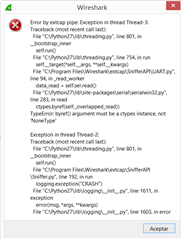Hi all,
BLE newbie here.
I have a peripheral device (iBKS105 beacon) configured with Eddystone and iBeacon protocols, emitting on channels 37, 38 and 39. I set the advertising interval to 1000ms, and the sampling time to 1 sec. I also have a central device (nRF51 dongle) from which I do not know the scan interval and scan window. I capture packages through Wireshark. With the above data and theoretically speaking Wireshark should receive (for the sampling time=1sec) a maximum number of packets equal to 3 channels x 2 protocols = 6, however I receive a number of packages around of 26-30. How is this possible?
Is there a relation between advertising interval, scan interval, scan window, sampling time and the number of packages received?
Thanks in advance!

